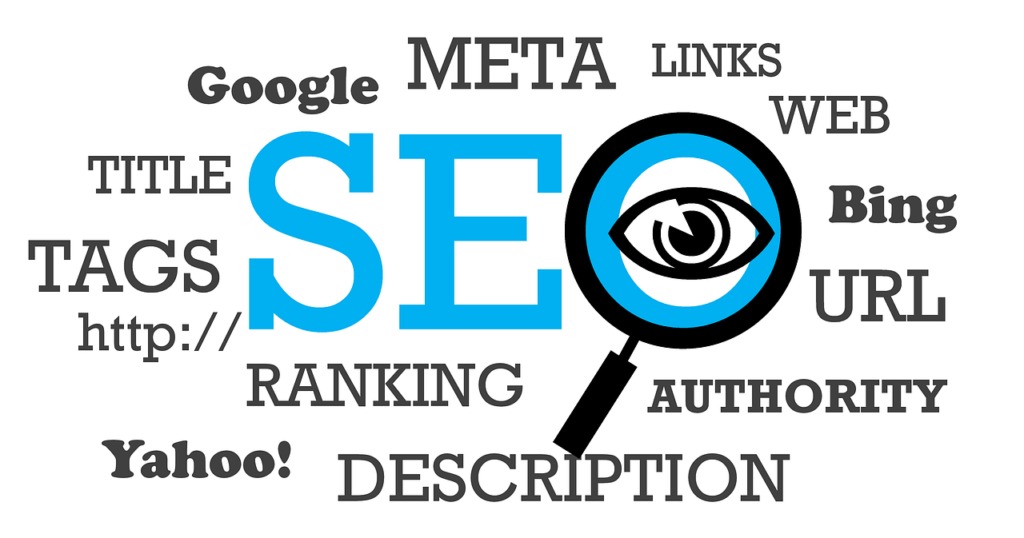Let’s be honest – technical SEO can feel like trying to solve a Rubik’s cube blindfolded. You know there’s a method to the madness, but where do you even start? If you’ve ever stared at your website’s analytics wondering why your rankings aren’t budging despite your best content efforts, you’re probably missing some crucial technical elements.
Here’s the thing: content might be king, but technical SEO is the foundation that keeps the castle standing. Without a solid technical foundation, even the most brilliant content strategy will crumble. That’s why I’ve put together this comprehensive technical SEO audit checklist – 50 specific points that actually move the needle on rankings.
Why Technical SEO Audits Matter More Than Ever
Before we dive into the checklist, let’s talk about why technical SEO has become absolutely critical in 2024 and beyond. Google’s algorithms have become incredibly sophisticated, and they’re not just looking at what you say – they’re examining how well your website performs under the hood.
Think of technical SEO as the engine of a race car. You can have the most beautiful car in the world, but if the engine isn’t tuned properly, you’re not winning any races. Similarly, your website might have amazing content, but if it’s technically flawed, search engines will struggle to crawl, index, and rank your pages effectively.
The reality is that technical issues can be silent ranking killers. They’re often invisible to users but glaringly obvious to search engine crawlers. A single technical problem can cascade into multiple ranking issues, making it essential to approach technical SEO systematically.
Core Website Performance Audit Points
Let’s start with the foundation – your website’s performance. These elements directly impact user experience and search rankings.
1. Page Speed Analysis Check your Core Web Vitals using Google PageSpeed Insights. Your Largest Contentful Paint should be under 2.5 seconds, First Input Delay under 100 milliseconds, and Cumulative Layout Shift under 0.1. These metrics aren’t just suggestions – they’re ranking factors.
2. Mobile Page Speed Test mobile performance separately. Mobile-first indexing means Google primarily uses the mobile version of your site for ranking. If your mobile site is slow, your rankings suffer across all devices.
3. Server Response Time Your Time to First Byte should be under 600 milliseconds. Anything longer indicates server performance issues that need immediate attention.
4. Image Optimization Audit all images for proper compression, format (WebP when possible), and appropriate sizing. Large, unoptimized images are one of the biggest performance killers.
5. CSS and JavaScript Optimization Minify CSS and JavaScript files, remove unused code, and implement proper loading strategies. Render-blocking resources can significantly slow down your site.
Crawlability and Indexation Checklist
These points ensure search engines can properly discover and index your content.
6. Robots.txt File Verify your robots.txt file isn’t blocking important pages. A misconfigured robots.txt can accidentally hide your entire website from search engines.
7. XML Sitemap Ensure your XML sitemap is current, properly formatted, and submitted to Google Search Console. Include only indexable URLs and update it regularly.
8. Internal Linking Structure Audit your internal linking to ensure important pages are easily discoverable. Every page should be reachable within three clicks from your homepage.
9. Crawl Budget Optimization For larger sites, monitor your crawl budget usage. Remove low-value pages from being crawled and focus Google’s attention on your most important content.
10. URL Structure Check that URLs are clean, descriptive, and follow a logical hierarchy. Avoid dynamic parameters when possible and use hyphens instead of underscores.
Mobile-First Indexing Compliance
With mobile-first indexing, these points are non-negotiable.
11. Mobile Responsiveness Test your site on various devices and screen sizes. Use Google’s Mobile-Friendly Test tool to identify specific issues.
12. Touch Element Spacing Ensure clickable elements are properly spaced for mobile users. Google recommends at least 48 CSS pixels between touch targets.
13. Mobile Content Parity Verify that your mobile version contains the same content as your desktop version. Hidden content on mobile won’t be indexed.
14. Mobile Navigation Check that your mobile navigation is intuitive and all important pages remain accessible on smaller screens.
15. Viewport Configuration Implement proper viewport meta tags to ensure your site displays correctly across different devices.
URL Structure and Site Architecture
A well-organized site structure helps both users and search engines navigate your content.
16. URL Canonicalization Implement canonical tags to prevent duplicate content issues. Every page should have a clear canonical version.
17. HTTPS Implementation Ensure your entire site uses HTTPS. Mixed content warnings can hurt both user trust and search rankings.
18. URL Redirects Audit all redirects for efficiency. Long redirect chains waste crawl budget and can cause page load delays.
19. Breadcrumb Navigation Implement breadcrumbs with proper schema markup to help users and search engines understand your site structure.
20. Site Architecture Depth Keep important pages within 3-4 clicks of your homepage. Deeper pages receive less link equity and may be crawled less frequently.
Schema Markup and Structured Data
Structured data helps search engines understand your content better and can improve your search appearance.
21. Schema Implementation Add relevant schema markup to help search engines understand your content type, whether it’s articles, products, reviews, or local business information.
22. Structured Data Testing Use Google’s Rich Results Test to verify your structured data is properly implemented and eligible for rich snippets.
23. Product Schema For e-commerce sites, implement product schema with price, availability, and review information to enable rich product listings.
24. Article Schema Blog posts and articles should include article schema with proper author, publication date, and organization markup.
25. Local Business Schema Local businesses must implement local business schema with accurate NAP information, hours, and service areas.
Content Quality and Duplication Issues
Technical SEO isn’t just about code – it’s also about content structure and quality.
26. Duplicate Content Detection Use tools like Screaming Frog to identify duplicate title tags, meta descriptions, and content across your site.
27. Thin Content Pages Audit pages with minimal content that provide little value to users. These pages can drag down your overall site quality.
28. Content-to-Code Ratio Ensure your pages have a healthy content-to-HTML ratio. Pages with excessive code and minimal content may struggle to rank.
29. Heading Structure Verify proper H1-H6 hierarchy. Each page should have one H1 tag and use heading tags to create a logical content structure.
30. Content Freshness Identify outdated content that needs updating. Fresh, current content performs better in search results.
Security and Technical Infrastructure
Security issues can severely impact your search rankings and user trust.
31. SSL Certificate Ensure your SSL certificate is valid, properly configured, and covers all subdomains and page variations.
32. Security Headers Implement proper security headers like X-Frame-Options, X-Content-Type-Options, and Content-Security-Policy.
33. Malware Scanning Regularly scan your site for malware, suspicious code, and security vulnerabilities that could harm your rankings.
34. Server Uptime Monitor server uptime and response times. Frequent downtime can negatively impact your search rankings.
35. CDN Implementation Consider using a Content Delivery Network to improve page load times for users in different geographic locations.
Advanced Technical SEO Elements
These advanced elements can give you a competitive edge in search rankings.
36. Core Web Vitals Optimization Go beyond basic speed testing and optimize for the specific Core Web Vitals metrics that Google uses for ranking.
37. JavaScript SEO If your site uses JavaScript heavily, ensure search engines can properly render and index your content.
38. Progressive Web App Features Consider implementing PWA features like service workers and app manifests to improve user experience.
39. HTTP/2 Implementation Upgrade to HTTP/2 for improved performance, especially on sites with many resources.
40. Image Lazy Loading Implement proper lazy loading for images to improve initial page load times without sacrificing functionality.
Search Console and Analytics Integration
Proper monitoring and measurement are essential for ongoing technical SEO success.
41. Google Search Console Setup Ensure Search Console is properly configured with all site variations and subdomains verified.
42. Core Web Vitals Monitoring Set up monitoring for Core Web Vitals data and create alerts for performance degradation.
43. Crawl Error Monitoring Regularly check for crawl errors, 404s, and server errors that could impact your site’s indexation.
44. Search Performance Analysis Monitor your search performance data to identify technical issues affecting specific pages or queries.
45. Index Coverage Analysis Review index coverage reports to ensure all important pages are being indexed properly.
International and Multi-Language Considerations
For sites serving multiple markets or languages, these technical elements are crucial.
46. Hreflang Implementation Properly implement hreflang tags for international sites to help search engines serve the correct language/region version.
47. International URL Structure Choose and consistently implement an international URL structure (subdirectories, subdomains, or ccTLDs).
48. Currency and Language Signals Ensure proper currency, language, and regional signals are present for international content.
49. Geographic Targeting Set up proper geographic targeting in Search Console for different site sections.
50. Multi-Language Content Quality Verify that translated content maintains the same quality and technical optimization as your primary language content.
Putting Your Technical SEO Audit into Action
Now that you have this comprehensive technical SEO audit checklist, the key is systematic implementation. Don’t try to tackle everything at once – that’s a recipe for overwhelm and mistakes.
Start with the performance and crawlability issues, as these typically have the most immediate impact on rankings. Focus on fixing critical problems first, then gradually work through the more advanced optimizations.
Remember, technical SEO isn’t a one-time task. Search engines evolve, your website grows, and new technical challenges emerge. Make technical SEO audits a regular part of your SEO routine – quarterly reviews are ideal for most websites.
The bottom line is this: technical SEO might not be glamorous, but it’s absolutely essential for ranking success. Every point on this checklist represents an opportunity to improve your website’s visibility and performance. Take action on these technical SEO audit points, and you’ll see the difference in your rankings, traffic, and overall online success.
Your competitors might be creating great content, but if they’re ignoring technical SEO, you have a massive opportunity to outrank them by getting the technical fundamentals right. Use this checklist as your roadmap to technical SEO success.

